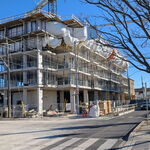I'm sure that some parts of GO have such numbers, although I've never seen them. But I can tell you right now that the capital outlay for improving mid-day service on the Lakeshore lines is virtually nil, whereas all of the other lines have fairly large capital costs due to things like new signalling systems, additional tracks, grade separations, etc. The projected or latent demand on the other lines would have to be pretty damn high to overcome it by those metrics.
Dan
Toronto, Ont.
Good point. I'm sure there would be some operational costs associated with it though. Maybe a better way to look at the latent demand is a "new riders per dollar spent" ratio. The increase in ridership from running 30 minute service on Lakeshore may be virtually nil, but if the operational cost is low as well, you may get a very good ratio in terms of riders/$.
On the other hand, these large-scale and large cost upgrades may generate a significant amount of new ridership, so the riders/$ figure may be in the same ballpark. Just using total BS numbers here, but spending $10 on Lakeshore to get 1 new rider is the same as spending $1000 on Milton and getting 100 new riders.




